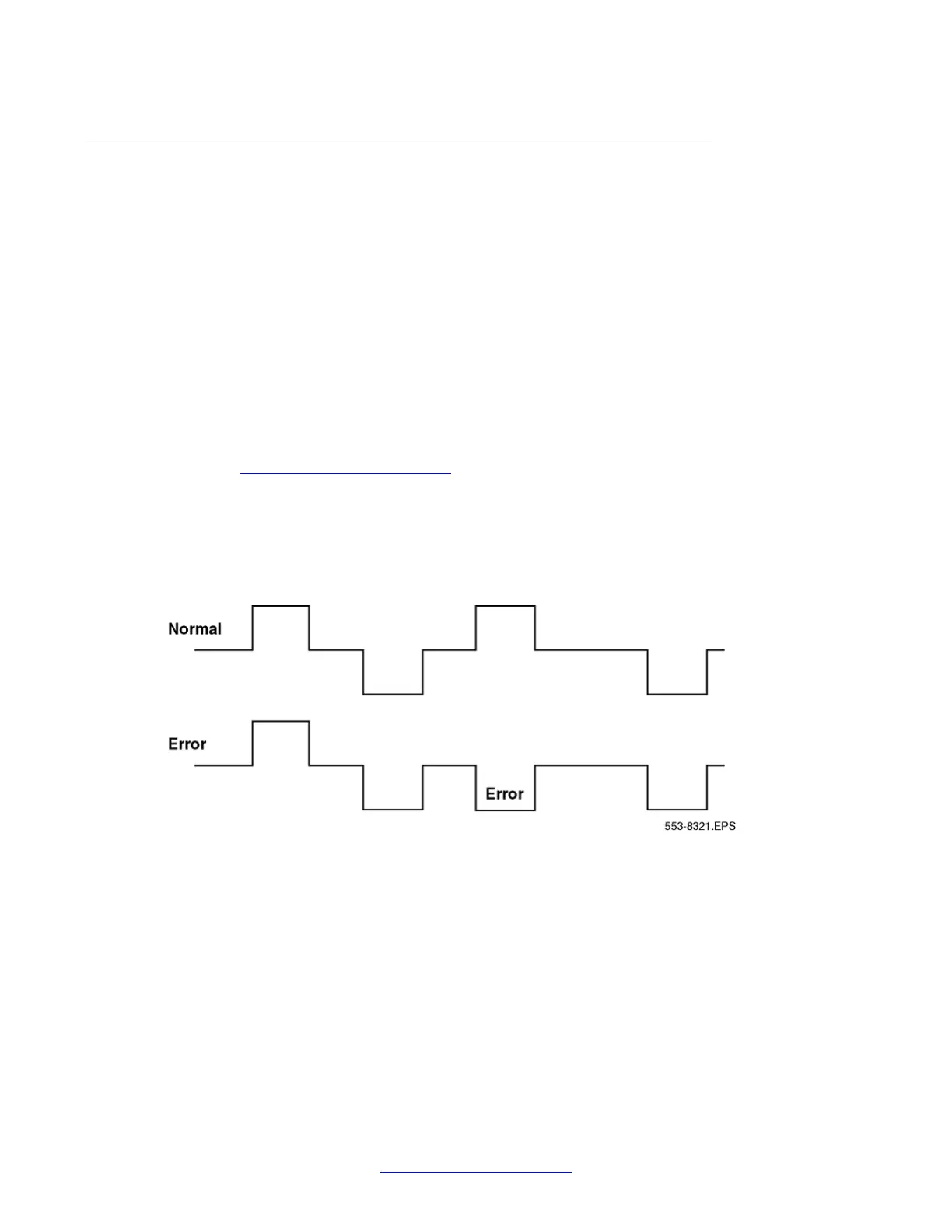Group I errors
These are real-time calculated error-rate thresholds. Group I errors can include:
•
Bipolar Violations (BPV)
• Frame Bit Errors (FBER)
• CRC-4 Word Errors (CRC)
• Controlled Frame Slips
Bipolar Violations (BPV)
In an Alternate Mark Inversion (AMI) bipolar pulse stream, pulses alternate in polarity. A bipolar
violation has occurred when two pulses of the same polarity are received in succession, as
shown in
Figure 32: Bipolar violations on page 150. This might be caused by an electrical
disturbance such as noise, a low signal level or a faulty repeater. Bipolar violations indicate
the integrity of the local span from the system to the first repeater.
The PRI card, following the CEPT PCM-30, uses a zero code suppression technique known
as HDB3, which introduces intentional bipolar violations onto the carrier. The bipolar violations
are recognized by the receiver and disregarded as bipolar violation errors.
Figure 32: Bipolar violations
Frame bit errors
The NT
AK79/NTBK50 PRI CEPT PCM-30 stream is structured into a frame of 32 8-bit
timeslots. To maintain alignment of this frame structure, alternate timeslot zeros have a specific
frame alignment pattern (X0011011).
A frame bit error is acknowledged when any bit in the received pattern is in error. This error
rate indicates the integrity of the end-to-end span.
2.0 Mb PRI maintenance
150 ISDN Primary Rate Interface Maintenance November 2011
Comments? infodev@avaya.com

